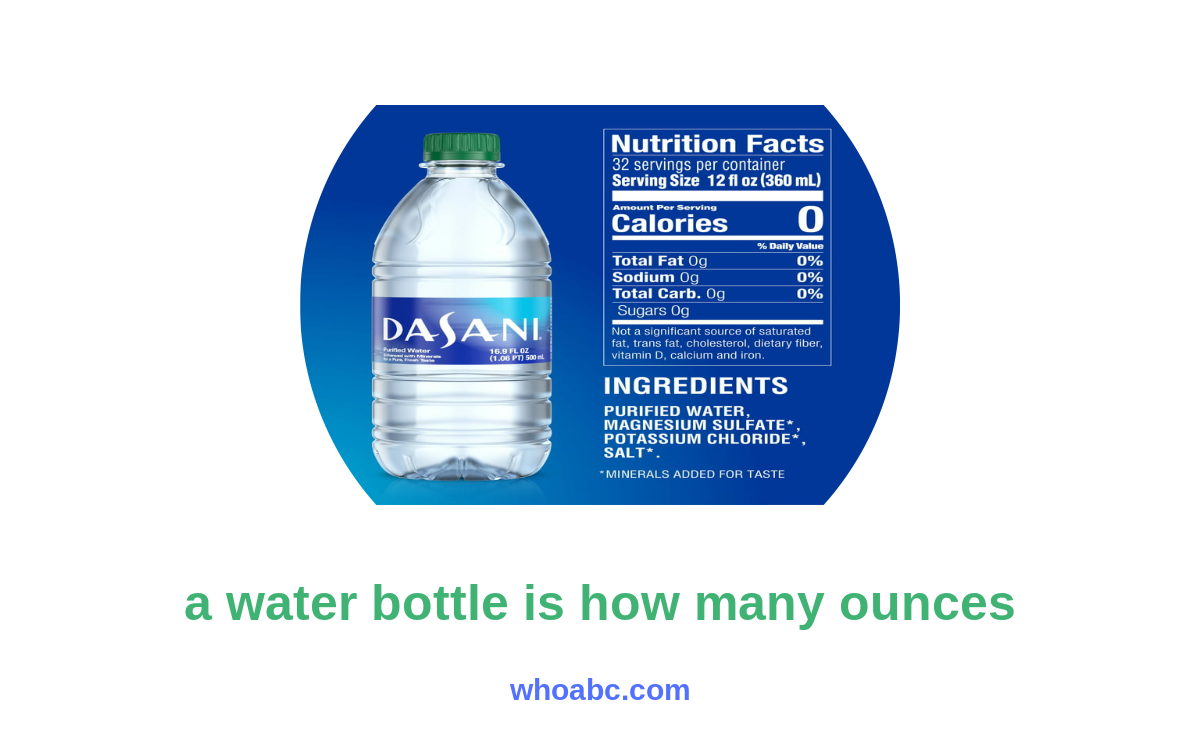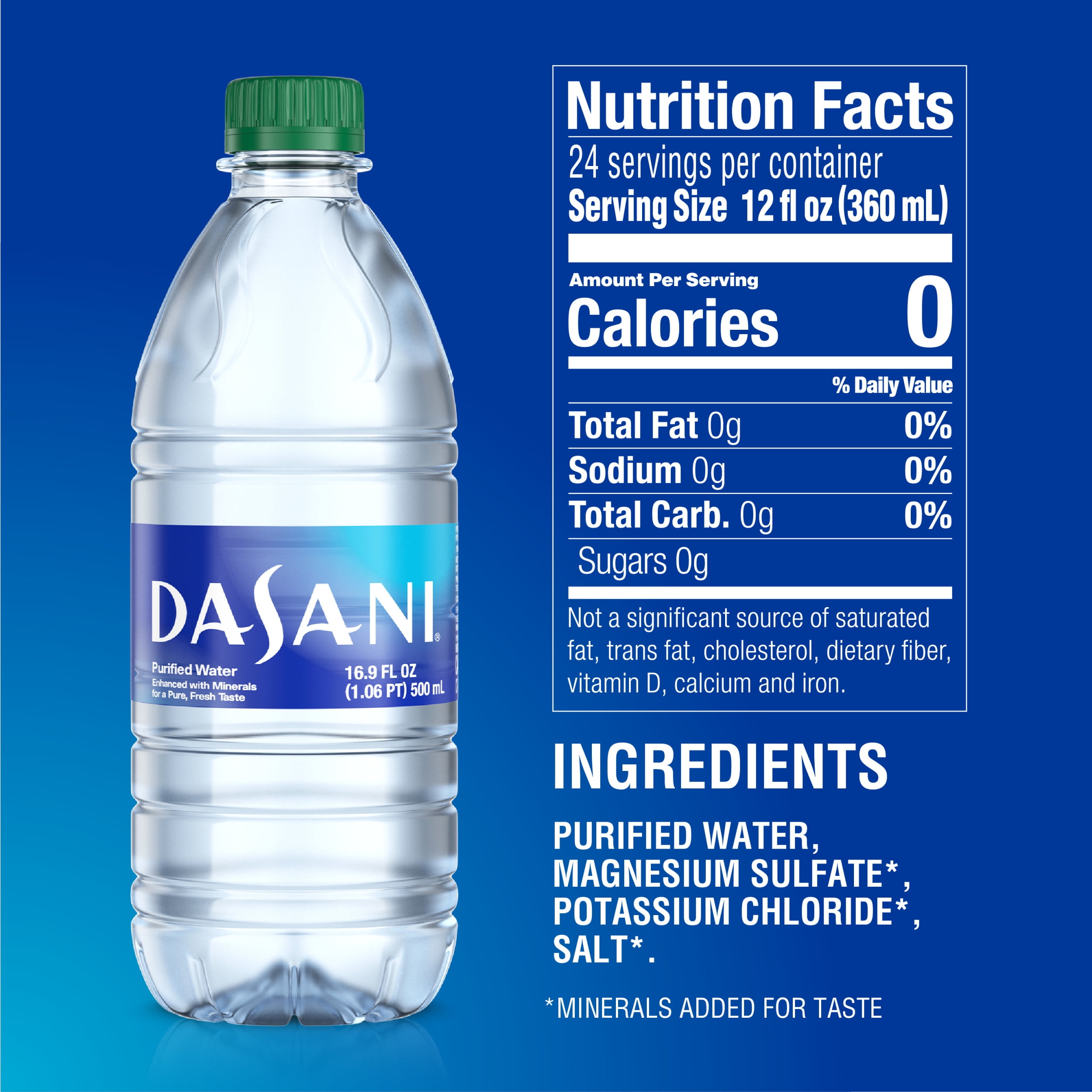The Ultimate Guide: Discovering Water Bottle Capacity in Ounces
This page for The Ultimate Guide: Discovering Water Bottle Capacity in Ounces.

Unveiling the Different Water Bottle Sizes: A Comprehensive Overview
When it comes to water bottles, there is no one-size-fits-all option. Water bottles come in a wide range of sizes, each designed to meet different needs and preferences. These sizes are typically measured in ounces, providing a standardized unit of capacity.
Common water bottle sizes include:
- 8 ounces: This is the smallest water bottle size available, suitable for short outings or kids.
- 12 ounces: A compact size that is still portable and convenient for activities like hiking or running.
- 16 ounces: A popular size for everyday use, fitting easily in most cup holders and backpack pockets.
- 24 ounces: Slightly larger and ideal for longer outings or intense physical activities.
- 32 ounces: A larger size favored by those who want to stay hydrated throughout the day without frequent refills.
- 40 ounces and above: These larger bottles are often used for outdoor activities, such as camping or long hikes.
The availability of these sizes may vary depending on the brand and type of water bottle you choose. It's important to consider your specific needs and preferences when selecting a water bottle size.
Understanding the Importance of Water Bottle Capacity in Ounces
The capacity of a water bottle in ounces plays a crucial role in determining its usability and suitability for different situations. It directly impacts the amount of water you can carry with you and how frequently you will need to refill it.
The recommended daily water intake for an average adult is around 64 ounces, or approximately eight glasses of water. Having a water bottle that can hold an adequate amount of water helps ensure that you meet your hydration goals throughout the day.
Besides individual hydration needs, the water bottle's capacity also affects its portability. If you're planning an outdoor activity or a long journey, a larger capacity bottle may be more convenient as it reduces the need for frequent refills.
Choosing the Right Water Bottle Size: Factors to Consider
Several factors should be taken into account when selecting the right water bottle size:
- Intended Use: Consider where and how you plan to use the water bottle. Will it be for everyday use, sports activities, or outdoor adventures?
- Portability: If you need a water bottle that can easily fit in your bag or cup holder, opt for a smaller size. However, if convenience outweighs portability, a larger size might be more suitable.
- Daily Water Intake: If you struggle to drink enough water during the day, choosing a larger water bottle can help you stay on top of your hydration goals.
- Temperature Control: If you prefer to keep your beverage cold or hot for extended periods, consider a water bottle with insulation. However, keep in mind that insulated bottles might be bulkier and heavier.
- Personal Preference: Ultimately, the right water bottle size depends on your personal preference. Some people prefer smaller bottles for convenience, while others prioritize capacity for longer outings.
By considering these factors, you can choose a water bottle size that perfectly suits your needs.
Exploring the Benefits of Different Water Bottle Capacities
Each water bottle capacity has its own set of advantages:
- Smaller Sizes: Smaller water bottles are lightweight and easy to carry, making them ideal for short trips, workouts, or for kids' use.
- Medium Sizes: Medium-sized water bottles strike a balance between portability and capacity, making them versatile options for most activities.
- Larger Sizes: Larger water bottles are perfect for outdoor adventures and longer journeys, minimizing the need for frequent refills.
Choosing the right water bottle capacity ensures that you have enough hydration to meet your needs without overburdening yourself with excessive weight or bulkiness.
Demystifying Common Questions: How Many Ounces is an Ideal Water Bottle?
The ideal water bottle size depends on various factors such as personal preference, daily water intake goals, and intended use. However, for most individuals, a water bottle in the range of 16 to 32 ounces is a popular choice.
A 16-ounce water bottle provides a good balance of portability and capacity, making it suitable for everyday use or light physical activities. It is compact enough to carry around, yet large enough to hold an adequate amount of water.
If you need a larger water bottle for intense workouts, demanding outdoor activities, or to ensure you meet your daily water intake goals without frequent refills, a 32-ounce water bottle might be a better option. Its larger capacity will keep you hydrated throughout the day.
Ultimately, the ideal water bottle size varies from person to person. It is essential to consider your hydration needs, lifestyle, and personal preferences when determining the right size for your water bottle.

Video about a water bottle is how many ounces
Some question and answer of a water bottle is how many ounces
Question 1: How many ounces are typically in a standard water bottle?
Most standard water bottles typically contain 16 ounces of liquid.
Question 2: What is the average size of a small water bottle in terms of ounces?
A small water bottle usually holds around 8 ounces of liquid.
Question 3: How many ounces can a large water bottle hold?
A large water bottle can typically hold around 32 ounces of liquid.
Question 4: What is the size of a mini water bottle in terms of ounces?
A mini water bottle usually holds about 4 ounces of liquid.
Question 5: How many ounces does a jumbo-sized water bottle usually hold?
A jumbo-sized water bottle can hold around 64 ounces or more of liquid.
Conclusion
In conclusion, understanding the capacity of a water bottle in ounces can undoubtedly make a significant difference in our day-to-day lives. By familiarizing ourselves with different sizes and their corresponding purposes, we can make more informed choices when selecting a water bottle that suits our specific needs. Whether it's a compact companion for those on the go or a larger capacity bottle for the gym or outdoor adventures, we now have the knowledge to make a wise decision. So, let us raise our water bottles high, embracing the simple yet vital act of staying hydrated. Remember, each sip brings us closer to a healthier and more fulfilling life. Cheers to the wonderful journey towards optimal hydration!Thank you so much for reading The Ultimate Guide: Discovering Water Bottle Capacity in Ounces article. Please let us know how you feel after reading this article.
Please comment in accordance with the policy - otherwise your comments will not be accepted.
comment url